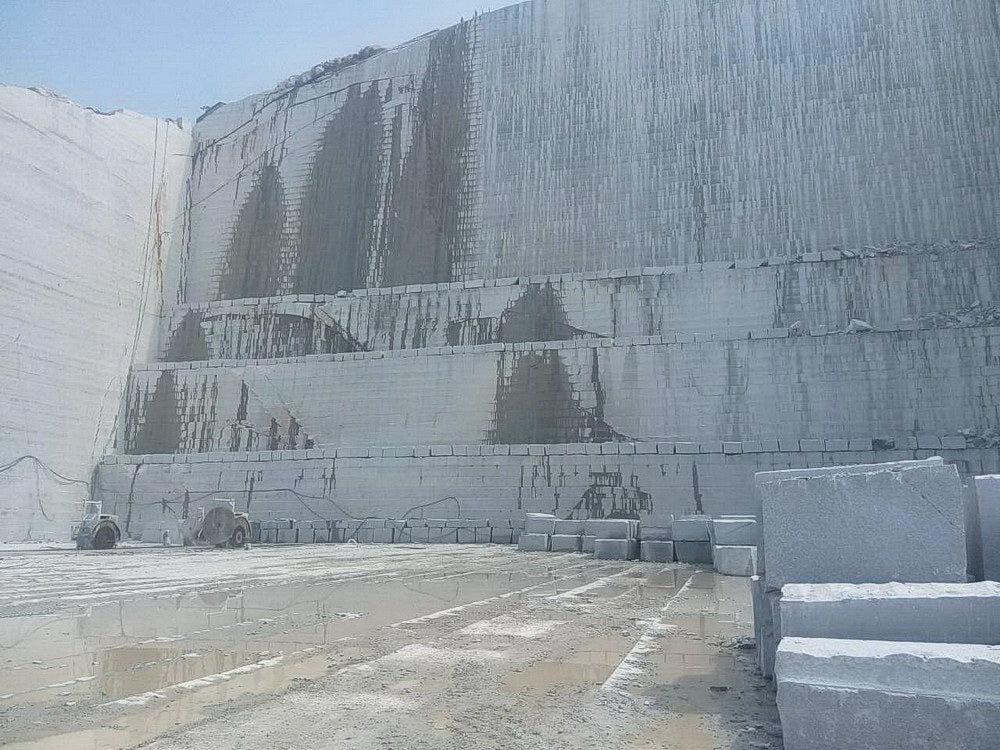Granite Quarries in South Africa Marvels: Exploring the Quarry Landscape
Granite Quarries in South Africa Marvels: Exploring the Quarry Landscape
Blog Article
Unveiling the Mysteries of Granite Quarrying: Where Stamina and Sophistication Meet
The globe of granite quarrying is a realm where the raw stamina of nature merges with human creativity to develop structures that stand the test of time with an air of sophistication. From the midsts of quarries to the meticulous polishing in workshops, the process of transforming granite right into building wonders is a complex dance of tradition and advancement. As we peer right into the midsts of this ancient craft, we begin to uncover the concealed details that form the very essence of our developed setting.
The Beginnings of Granite Quarrying
In the record of building history, the origins of granite quarrying are shrouded in a tapestry of ancient workmanship and geological wonders. Going back to old Egypt and Mesopotamia, the removal of granite from quarries marked the beginning of a journey that would ultimately bring about the creation of a few of the globe's most famous frameworks.
Granite quarrying's origins can be mapped to the competent craftsmens that identified the rock's resilience and aesthetic charm. With a combination of primitive tools and large decision, these very early quarry employees unearthed granite blocks that would end up being the building blocks of people.
As worlds progressed, so did the strategies of quarrying granite. The Romans, renowned for their design prowess, established sophisticated approaches for removing granite to create monuments, temples, and roads that stood the test of time.
The legacy of these old quarrying practices continues to form modern-day style, with granite continuing to be a symbol of stamina and beauty in building jobs around the world. (granite quarries in south africa)
Tools of the Quarrying Trade
The evolution of granite quarrying strategies from old human beings to modern-day times highlights the critical duty played by the devices of the quarrying sell shaping the market's methods. In ancient times, quarrying tools were fundamental, typically including knives, hammers, and wedges made from products like bronze or iron. These tools called for significant workforce and time to remove granite obstructs from quarries.

Additionally, the intro of pneumatically-driven devices and high-powered machinery has actually considerably reduced the physical labor called for in quarrying operations, improving worker safety and productivity. As the quarrying market remains to innovate, the devices of the profession stay at the forefront of driving progression and forming the future of granite removal.
Removing Blocks of Granite
Using accuracy machinery and progressed techniques, the extraction of granite blocks from quarries has come to be an innovative procedure in the modern quarrying industry. The preliminary action involves determining the area and size of the granite deposit to determine one of the most reliable extraction method. As soon as an appropriate site is picked, the removal process starts with the boring of holes moved here for the positioning of explosives. Controlled blasting methods are after that employed to disintegrate the granite right into workable areas.

Polishing and Ending Up Methods
To accomplish a remarkable surface area on granite blocks, proficient artisans use a collection of thorough polishing and ending up techniques. After the first extraction and forming processes, the granite blocks undertake an extensive sprucing up stage to boost their natural elegance and sturdiness. One usual approach used in polishing granite is ruby abrasion, where industrial diamonds are used to grind and brighten the stone to a smooth finish. This procedure not just produces a glossy surface but likewise guarantees harmony in shade and structure throughout the granite block.
Along with sprucing up, completing methods are put on more improve the granite's appearance. These techniques might include flaming, developing, or cleaning, each offering one-of-a-kind structures and surfaces to match different visual choices. Flaming, for example, includes revealing the granite surface to high temperature levels to create a rough, distinctive surface, ideal for outdoor applications where slip-resistance is necessary. Sharpening, on the various other hand, provides a matte surface that is smooth to the touch, ideal for interior kitchen counters and floor covering. By meticulously picking and applying these brightening and ending up methods, craftsmens can transform raw granite obstructs right into elegant items that display both strength and elegance.

Environmental Effect and Sustainability
With the expanding focus on environmental consciousness in the industry, granite quarrying practices are progressively looked at for their influence on natural deposits and long-term sustainability. Quarrying for granite can have considerable ecological effects. The removal process frequently involves making use of heavy equipment, explosives, and huge quantities of water, causing habitat devastation, dirt erosion, and water pollution. Additionally, the transport of granite from quarries to refining facilities produces carbon discharges, further contributing to environmental degradation. granite quarries in south africa.
To reduce these influences and make certain sustainability in granite this page quarrying, market stakeholders are embracing numerous procedures. Carrying out advanced innovations to lower power usage and water use, recovering quarried land for environmental repair, and promoting liable sourcing methods are some strategies being employed. In addition, certifications such as the Forest Stewardship Council (FSC) and the Management in Power and Environmental Layout (LEED) help customers identify ecologically friendly granite products.
Conclusion
Finally, granite quarrying is a process that calls for specialized devices and strategies to remove blocks of granite and polish them to a high level of coating. While the ecological effect of quarrying can be considerable, efforts are being made to enhance sustainability techniques in the sector. Overall, granite quarrying is a delicate equilibrium between using the strength and elegance of this natural stone while decreasing its effect on the environment.
Report this page